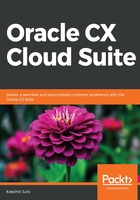
The limitations of CRM
CRM imposes significant limitations on organizations that implement it. These limitations were not apparent for 20 years, but now they are hindering businesses in their efforts to deliver a great customer experience, and impose technical complications with exorbitant financial costs.
The most common problems with implementing CRM are those that stem from an organization's inconsistencies. Simply put, they occur when CRM is run by a separate department or departments within an organization, and there is no real perception of a CRM end-to-end strategy. These departments are most often marketing departments, specialized CRM departments, or sales departments. Relationships with consumers are not painful in the aforementioned departments; problems usually arise in departments that are in contact with consumers, such as customer service, personnel in stores, and so on. These departments usually do not have enough influence when the time comes to define CRM solutions, strategies, and processes. Relationships with users are not painful in parts of the organization that are, by their nature, tuned to their needs; problems arise elsewhere.
Contemporary organizations usually have obscure units, such as police cells, whose task is to sanction naughty users. Sadly, such departments often use traditional police methods from the era of an economic system that was common to the whole world, regardless of the political system. It is a kind of economic communism, or a monopoly. One bidding, one showing attitude toward users, which in essence comes down to the phrase you need us and we know what is best for you, or, as Ford said, you can get model T in any color you want, as long it is black. With fierce competition today, this approach is not a viable business strategy.
CRM systems fails to incorporate customer experience and customer needs in all departments, including departments that are, by nature, not customer-facing. To enable an appropriate customer experience, applications and strategies must be accepted by the whole organization in an easy and encompassing manner.